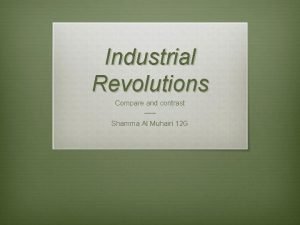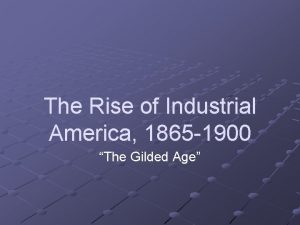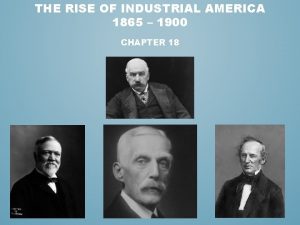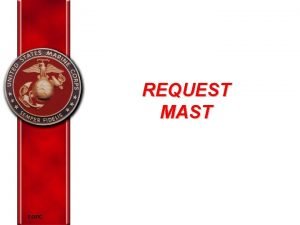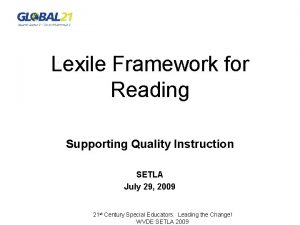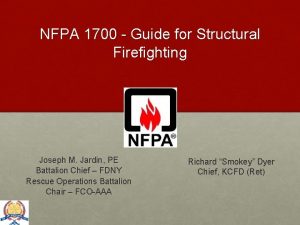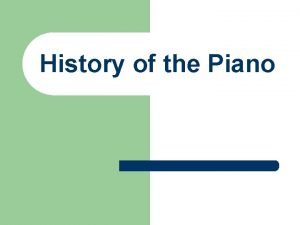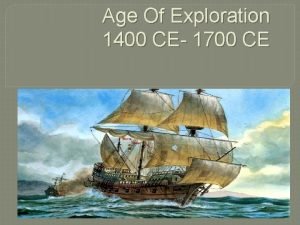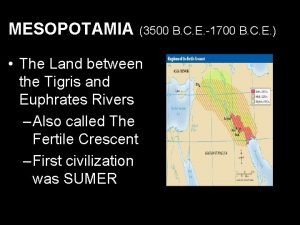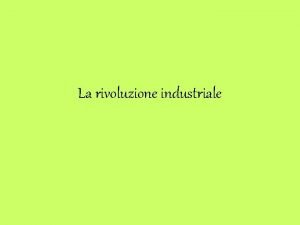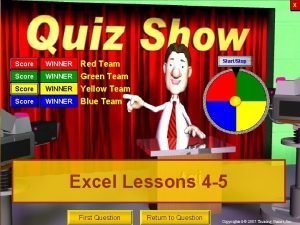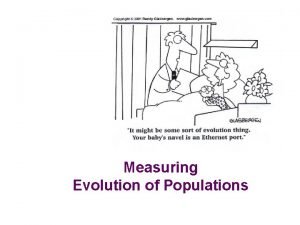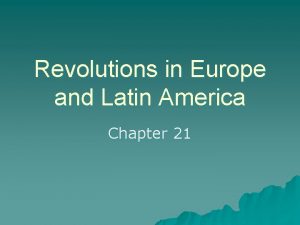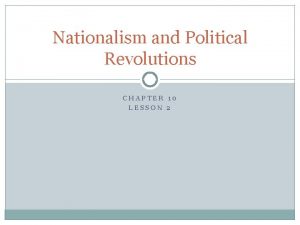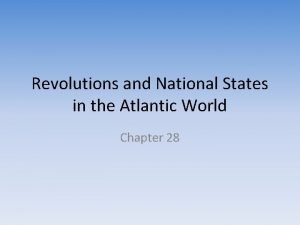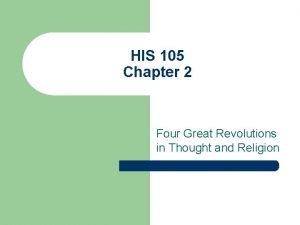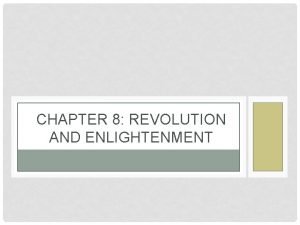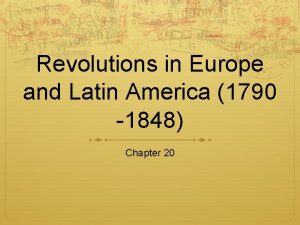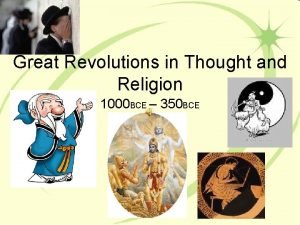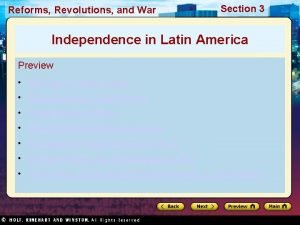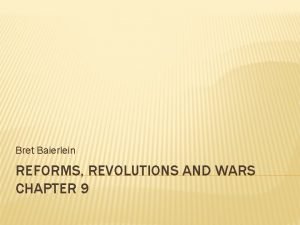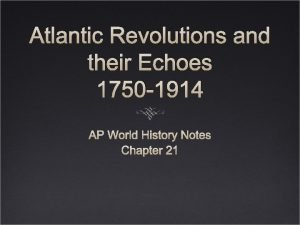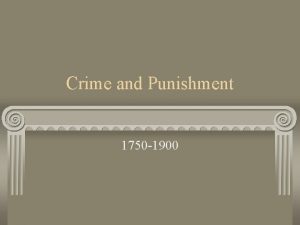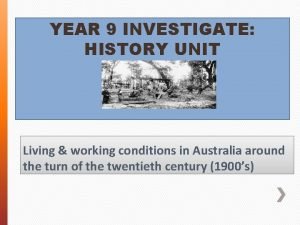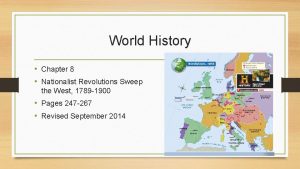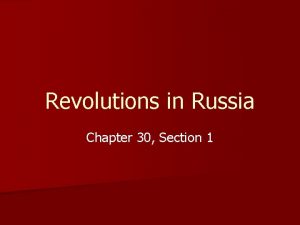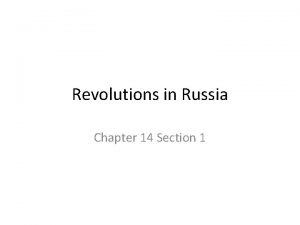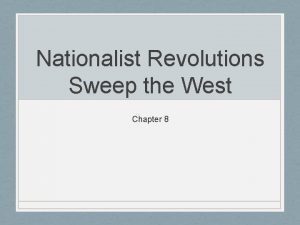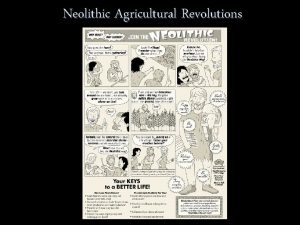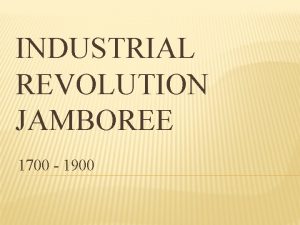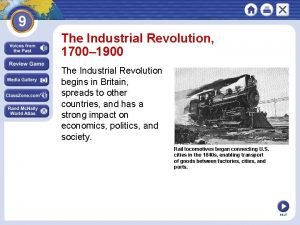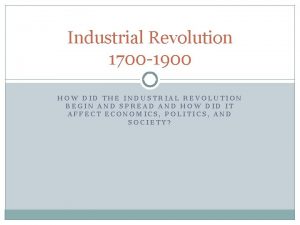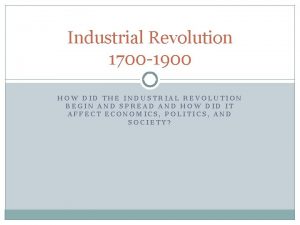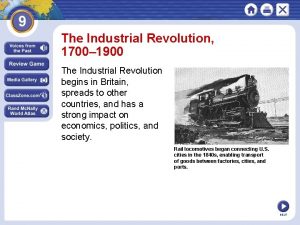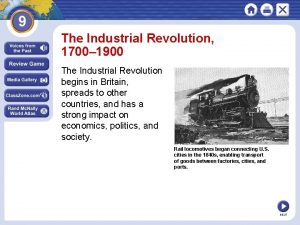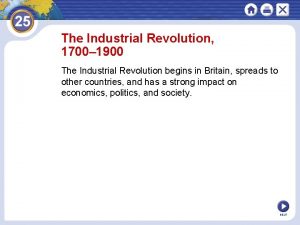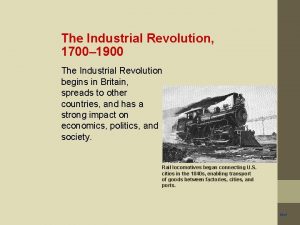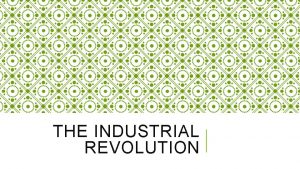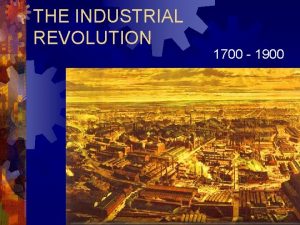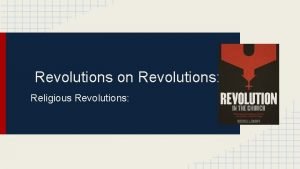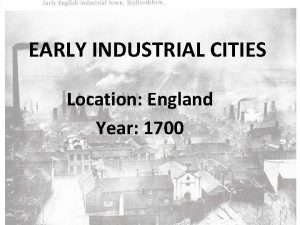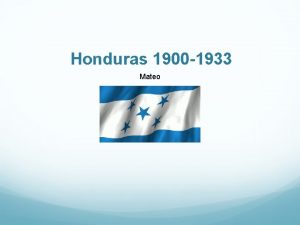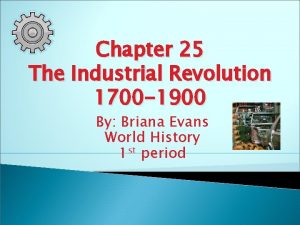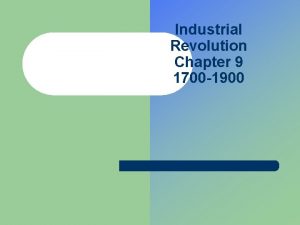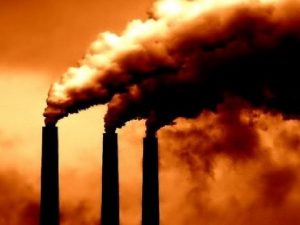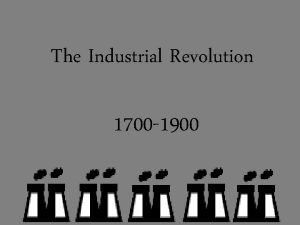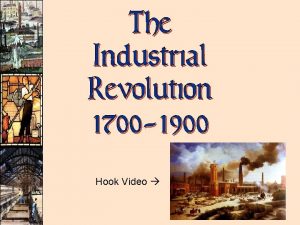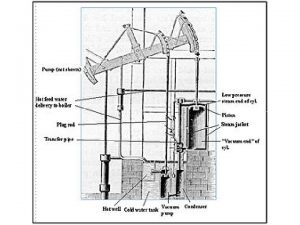Agricultural and Industrial Revolutions 1700 1900 I Agricultural


































- Slides: 34

Agricultural and Industrial Revolutions (1700 -1900)

I. Agricultural Revolution A. Enclosures- Large farms created by rich landowners; used new machines B. Put many farmers out of work, so they moved to the cities (became factory workers) C. New ways to grow food: 1. Seed drill (buried seeds, replaced broadcast method) 2. Crop rotation- used whole field for planting 3. Selective breeding (mate the best males and females)

Seed Drill

Threshing by Hand

Threshing Machine

Crop Rotation Food for livestock Drains nutrients from soil Replaces nutrients

Leicester Longwool Sheep increased in Size from 18 lbs to 50 lbs through breeding!!!

Effects of the Agricultural Revolution include…

More Food (cheaper prices)

Bigger Livestock (More animal products)

Population Growth (from having more food)

Bigger Farms (enclosures)

New Farming Machines

Fewer farmers (replaced by machines)

Industrial Revolution

II. Industrial Revolution A. Began in Great Britain B. Spread to continental Europe and America C. Machines replaced making goods by hand (mass production) D. Water and steam powered machines

III. Textiles- 1 st industry to be transformed (textiles = cloth) A. Machines created to process wool, cotton, yarn and thread (ex. spinning jenny, cotton gin) B. Factories replaced making goods at home (cottage industry) C. Result- clothing better quality and more affordable

Water Frame

Spinning Jenny

Spinning Mule

Textile Factory

IV. Transportation A. Steam engine- powered machines (from textiles to trains) B. Steamboat (faster water transportation) C. Canals built to speed up shipments D. Improved road systems E. Railroads- fastest transport; created jobs F. Result- faster shipment of goods and people= more money for business

Steam Engine

Suez Canal Construction

Suez Canal

Suez Canal

Suez Canal (completed in 1869) Connects the Mediterranean Sea to the Red Sea.

Suez Canal Faster sea trade and transportation between Europe and Asia

V. Quality of Life A. Positives 1. Life was very good for the upper class 2. More food, better quality consumer goods, faster transportation B. Negatives 1. Hard life for lower class (ex. Factory workers) 2. Cities overcrowded, dirty and polluted 3. Factories a dangerous place to work (injuries/death) 4. Long hours; even children were employed (1416 hour work days) - Labor laws and unions formed to protect workers

British Factories

British Factories

Child Labor

Child Labor

Questions for Review • Where did the Industrial Revolution begin? • Which industry in Great Britain was the first to undergo industrialization? • Which invention was used to make water travel more efficient? • Which group of people suffered the most as a result of the Industrial Revolution?
 First agricultural revolution ap human geography
First agricultural revolution ap human geography First and second industrial revolution
First and second industrial revolution The rise of industrial america 1865-1900
The rise of industrial america 1865-1900 The rise of industrial america 1865-1900
The rise of industrial america 1865-1900 Mco1700.23f
Mco1700.23f Lexile framework for reading
Lexile framework for reading Nfpa 1701
Nfpa 1701 1700 piano
1700 piano Christopher columbus significance
Christopher columbus significance Dynastic cycle def
Dynastic cycle def Eta 1700
Eta 1700 Rivoluzione agricola 1700
Rivoluzione agricola 1700 1700 luvun aatesuunta
1700 luvun aatesuunta Rotazione quadriennale rivoluzione industriale
Rotazione quadriennale rivoluzione industriale Puritan age in english literature
Puritan age in english literature To resize an embedded chart, ____.
To resize an embedded chart, ____. 1 in 1700 us caucasian newborns have cystic fibrosis
1 in 1700 us caucasian newborns have cystic fibrosis Ap2702 eol
Ap2702 eol 1700 bce
1700 bce Revolutions in europe and latin america section 2 quiz
Revolutions in europe and latin america section 2 quiz Lesson 2 nationalism and political revolutions
Lesson 2 nationalism and political revolutions Revolutions and national states in the atlantic world
Revolutions and national states in the atlantic world Four great revolutions in thought and religion
Four great revolutions in thought and religion How were european rulers guided by enlightenment thought?
How were european rulers guided by enlightenment thought? Revolutions in europe and latin america
Revolutions in europe and latin america Pythagorean theorem
Pythagorean theorem Reforms revolutions and war answer key
Reforms revolutions and war answer key Wars revolutions and reforms
Wars revolutions and reforms Chapter 17 atlantic revolutions and their echoes
Chapter 17 atlantic revolutions and their echoes Crime and punishment 1750 to 1900
Crime and punishment 1750 to 1900 Living and working conditions in australia 1900
Living and working conditions in australia 1900 Chapter 8 nationalist revolutions sweep the west
Chapter 8 nationalist revolutions sweep the west Chapter 30 revolutions in russia
Chapter 30 revolutions in russia Revolutions in russia chapter 14 section 1
Revolutions in russia chapter 14 section 1 Europe faces revolutions
Europe faces revolutions

